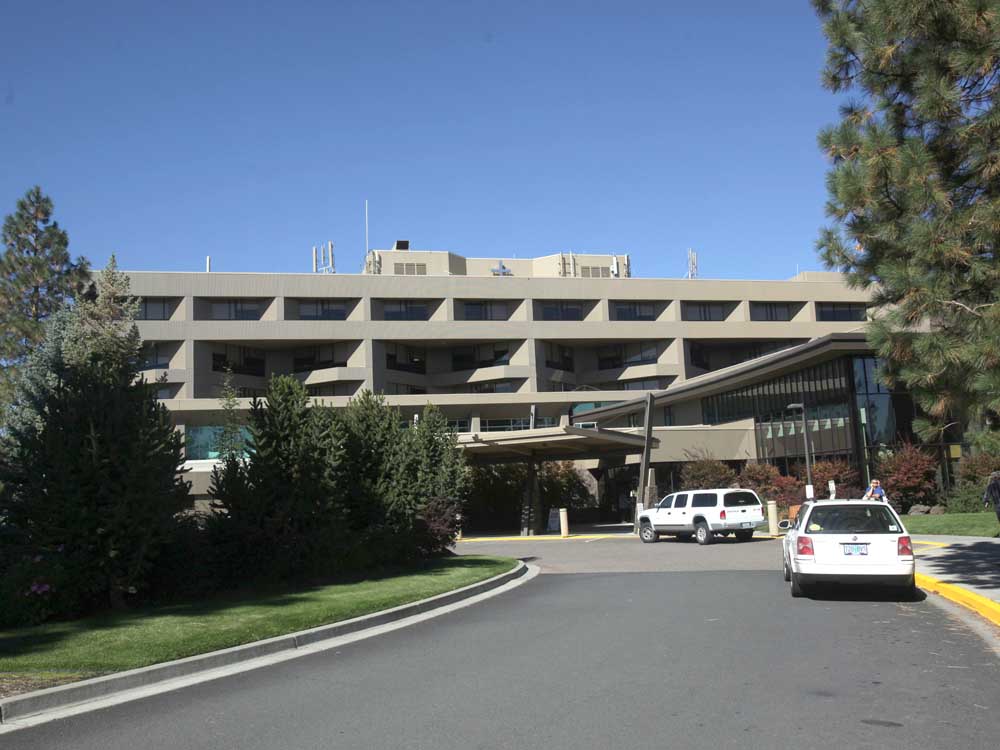St. Charles pulls back on pay cuts as finances improve
Published 12:00 am Thursday, April 19, 2018

- St. Charles Health System, Bend.
A strong fourth quarter combined with targeted cost-cutting stabilized the finances for the St. Charles Health System in 2017, and have improved prospects for a steady performance in 2018.
The improved financial outlook allowed the hospital system to reverse a 5 percent pay cut for salaried employees four months early.
“We started out the year knowing we had some challenges and there were a lot of headwinds,” St. Charles CFO Jenn Welander said. “The countermeasures helped reset the organization … and the early indicators are saying the reset that we did was appropriate and put us on the right path.”
In 2017, the hospital system’s revenues exceeded expenses by $82.6 million, compared to $58 million in 2016. The overall operating margin dropped to 3.2 percent from 5.2 percent.
According to Becker’s Hospital Review, a publication that tracks the hospital industry, the average margin for hospitals nationwide was 2.6 percent.
“In comparison to national benchmarks, St. Charles Health System is slightly above the national average,” said Dr. Lesley Clack, a professor of health policy and management at the University of Georgia’s College of Public Health. “While they are financially in good shape, financial decisions have to be made to decrease the gap between operating revenue and operating expenses.”
Revenues grew about 3 percent from 2016 to 2017, while operating costs rose 6 percent as the hospital system spent heavily to purchase and install a new electronic records system and to start construction on a new hospital tower. St. Charles shifted to the new health records system earlier this month.
The hospital system had projected a more dire finish to the year, and in the fall slashed costs to strengthen its financial position. But Welander said patient volumes surged in the final quarter of the year.
The hospital had implemented a 5 percent pay cut for employees above a certain salary threshold for six months in 2018. But when finances improved, the hospital ended the pay cut after just two months. A nine-month pay cut for hospital executives remains in effect.
“We were able to stabilize a little quicker than anticipated,” Welander said.
The amount of charity care provided by the hospital system in 2017 rose substantially to $12 million, from $4.7 million, while bad debt dropped to $5.9 million in 2017, from $15.7 million in 2016. Part of that flip represented a new approach to unpaid bills, using an algorithm similar to a credit score to determine which patients with unpaid bills after 90 days were unlikely to pay. Those bills were then automatically classified as charity care and the patients notified their balance had been zeroed out.
While charity care increased by less than the drop in bad debt, Welander cautions those figures were not comparable. Charity care numbers are measured in terms of the costs incurred in providing free care, while bad debt figures represent what the hospital bills for its care.
Charity care also increased as the hospital streamlined its financial assistance application and saw more people apply for help. The hospital also expanded its eligibility criteria for charity care to provide a 100 percent discount for families with income up to 300 percent of the federal poverty level, a 75 percent discount up to 350 percent, and a 50 percent discount up to 400 percent. Bills are also reduced to what Medicare pays for such services, before the discounts are applied.
That means an individual with annual income of up to $48,560 or a family of four with income up to $100,400 could receive financial assistance with their hospital bills.
“Even if you have insurance, you’re eligible for assistance plans,” Welander said. “We’ve actually seen that 55 percent of our charity care was given to people who have insurance. This is available for your coinsurance and your deductibles.”
Oregon lawmakers recently passed legislation to provide greater transparency in hospitals’ financial assistance policies, requiring the information to be written in plain language and posted on hospital websites. The legislation will also create a standard financial assistance application statewide, and work is currently underway by the Oregon Health Authority and the Oregon Association of Hospitals and Health Systems on the new form.
St. Charles saw a slight change in the percentage of revenues from Medicaid, as Oregon implemented stricter guidelines for re-enrollment in the Oregon Health Plan, Oregon’s version of Medicaid. That also led to a slight increase in patients paying bills themselves. Medicare patients also accounted for a larger percentage, which Welander attributed to the influx of retirees to Central Oregon and an aging population.
“If the Medicare portion of our business doesn’t go up every year till the baby boomers stop booming, then I would be surprised,” Welander said.
Rick Kes, health care senior manager for RSM, a Chicago-based accounting and consulting firm, noted that St. Charles had a solid operating margin and saw a slight increase in its patient volumes.
“I think a lot of health systems are probably seeing the opposite. They’re seeing decreases in discharges” he said. “The fact that this health system had stayed consistent is somewhat surprising.”
— Reporter: 541-633-2162, mhawryluk@bendbulletin.com







